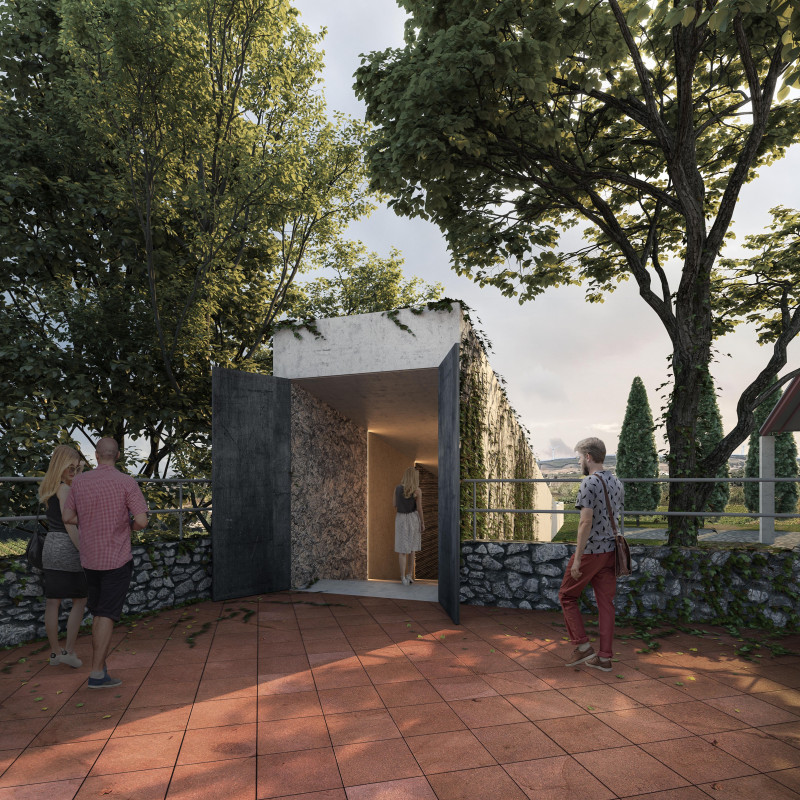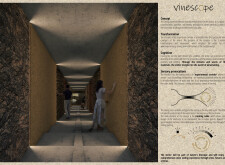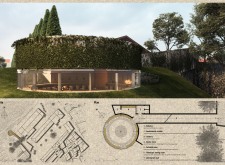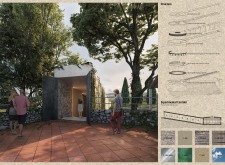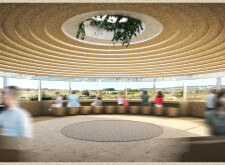5 key facts about this project
Vinescope is a carefully designed space located within a vinery setting. The tasting room focuses on creating an engaging experience for visitors, connecting them with the themes of winemaking and the surrounding landscape. The design encourages exploration and interaction, allowing guests to appreciate the process behind the wines they enjoy.
Experience Corridor
An experience corridor serves as a key feature, linking the vinery’s inner courtyard to the tasting area. This corridor acts as a transition, inviting visitors to leave behind the outside environment. Dimmed lighting creates an intimate atmosphere, while textures and materials along the walls encourage tactile and olfactory interactions. Guests can touch and smell various elements that represent the journey of the vine, enhancing their understanding of the wine they are about to taste.
Tasting Room Dynamics
Once visitors enter the tasting room, they encounter a rotating table that showcases sweeping views of the landscape. This unique design element integrates the visual experience with wine tasting, creating a more engaging atmosphere. Guests can absorb the scenery while enjoying local wines, making the connection between what they see and what they taste particularly strong.
Educational Component
The site plan includes several functional areas, such as an informative wall that provides insights into the vinery’s history and local winemaking techniques. There is also a service room dedicated to wine storage and preparation, ensuring that everything needed for tasting is easily accessible. A technical room facilitates the operation of the rotating platform, allowing the seamless movement of the table without interrupting the visitor experience.
Material Integration
Materials chosen for the project reinforce its relationship with the vinicultural landscape. Limestone and clay are used throughout, creating a natural look that fits well with the environment. Vine branches and oak barrels are incorporated into the design, linking the space to traditional winemaking practices. Large glass surfaces enhance the connection between the indoors and outdoors, inviting nature to play an important role in the visitor experience.
The tasting room finishes with a thoughtful sensory experience, where guests can enjoy a rich blend of sight, texture, and aroma while tasting wines that reflect the essence of the landscape.


